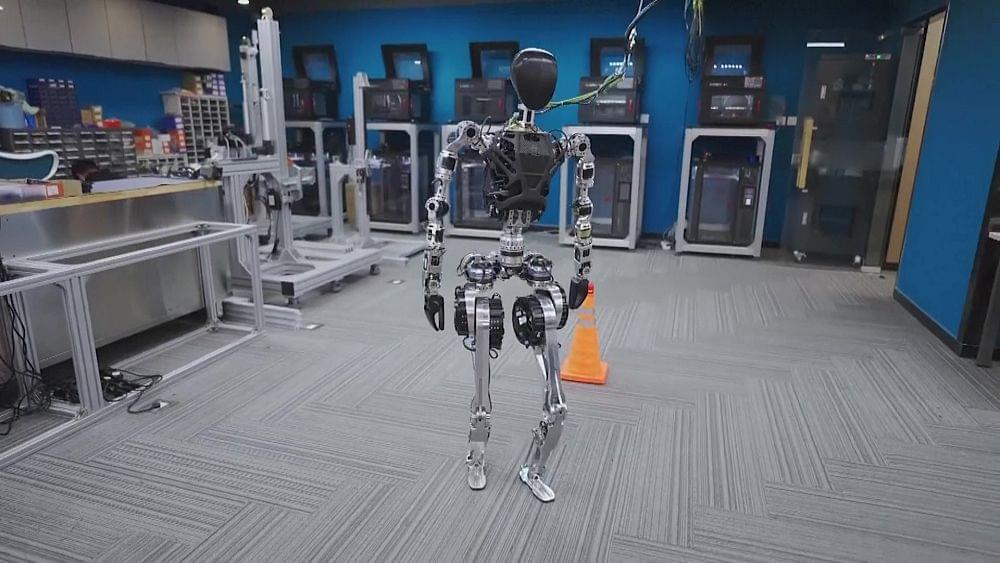A small soft robot composed of strategically magnetized polymers could one day find its way into human bodies.
Get the latest international news and world events from around the world.
Black Holes, Dark Matter & Quantum Gravity, what’s new in Loop Quantum Gravity
Are back holes related to dark matter? Do the observations of black holes by LIGO hint at a signature of quantum gravity? Can we find evidence of black holes from a previous universe?
In 2019 second place in the Buchalter Cosmology Prize was awarded to two of the speakers you will see in this film which explores some of the above themes. We filmed this at the Loop Quantum Gravity Conference in 2019 and plan to make a follow up film exploring the latest ideas in the field.
Look out for the optical illusion around 8:12–8:25.
Neuromancer: The Origin of Cyberpunk | A Horrifying Dystopia
Even if you are not familiar with Neuromancer by William Gibson you still technically have seen it, this is the case with many groundbreaking works of science fiction because t ropes invented in books like Neuromancer have become standard in science fiction since, especially within the genre we now know as cyberpunk.
Neuromancer is undeniably one of the most influential works of science fiction ever crafted. Credited with establishing the cyberpunk genre, alongside Ridley Scott’s 1982 film Blade Runner, Gibson’s masterpiece diverges from the far-future or galactic settings often explored in science fiction. Instead, it unfolds on Earth in the not-too-distant future, capturing a time when society grapples with the relentless pandemonium resulting from rapid technological and cultural changes and advancements.
👽 Please consider supporting this channel on Patreon: https://www.patreon.com/ideasoficeandfire.
or PAYPAL — https://paypal.me/QuinnsIdeas?locale.x=en_US
The Podcast: https://cosmicchronicles.buzzsprout.com/
🎨 Art: https://docs.google.com/document/d/1GIX4e2zdvHj41xCtKLe0LUSI…sp=sharing.
🎵 Music: https://www.youtube.com/@JamezDahlMusic.
📚 Get These Books!

Stuart Kauffman — Is the World Self-Organizing?
Watch Closer To Truth’s library of 5,000 videos for free: https://closertotruth.com/
Are the laws of nature or physics blind in that they seek no direction and have no ‘purpose’? That’s the scientific paradigm. But the world works so well: from a very simple beginning, complexities and beauties have emerged. Some say that there are deep ‘organizing principles’ in the laws of nature such that complexities are natural and expected outcomes.
Support the show with Closer To Truth merchandise: https://bit.ly/3P2ogje.
Explore more interviews on complexity and emergence: https://shorturl.at/knpCH
Stuart Alan Kauffman is a theoretical biologist and complex systems researcher who studies the origin of life on Earth.
Register for free at CTT.com for subscriber-only exclusives: https://bit.ly/3He94Ns.
China News | China Developing Neuro Strike & Tech Weapons To Disrupt Brain Functions | English News
Bio threat from China & PLA: Reports.
‘Neuro strike weapons being developed, population to be brainwashed; Tech weapon to disrupt brain functions,’ says report.
#china #xijinping #bioweapons #englishnews n18oc_breaking-news.
China developing ‘neurostrike’ weapons to gain control of minds, claims report | Oneindia News
According to intelligence analysts, China’s People’s Liberation Army is reportedly developing high-technology neurostrike weapons that are designed to disrupt brain functions and influence government leaders or entire population. The weapons can be used to directly attack or control brains using microwave or other directed energy weapons in handheld guns or larger weapons firing electromagnetic beams. Analysts, in their report, say that the danger of China’s brain warfare weapons prior to or during a conflict is no longer theoretical. They are also of the opinion that China‘s leadership views neurostrike and psychological warfare as a core component of its asymmetric warfare strategy against the United States and its allies in the Indo-Pacific. Neurostrike is a military term defined as the engineered targeting of the brains of military personnel or civilians using non-kinetic technology. The goal is to impair thinking, reduce situational awareness, inflict long-term neurological damage and cloud normal cognitive functions.
#Neurostrikeweapons #Chinaneurostrike #Chinaneweapon.
~PR.153~ED.102~HT.96~
Oneindia News is a youth-driven channel that brings you stories that need your attention, are popular, informative, and entertaining. Follow and like us for thought-provoking & exclusive content…
Youtube:
Like us on Facebook: https://www.facebook.com/oneindianews.
Follow us on Instagram: https://www.instagram.com/oneindia_news.
Will Superintelligent AI End the World? | Eliezer Yudkowsky | TED
Decision theorist Eliezer Yudkowsky has a simple message: superintelligent AI could probably kill us all. So the question becomes: Is it possible to build powerful artificial minds that are obedient, even benevolent? In a fiery talk, Yudkowsky explores why we need to act immediately to ensure smarter-than-human AI systems don’t lead to our extinction.
If you love watching TED Talks like this one, become a TED Member to support our mission of spreading ideas: https://ted.com/membership.
Follow TED!
Twitter: https://twitter.com/TEDTalks.
Instagram: https://www.instagram.com/ted.
Facebook: https://facebook.com/TED
LinkedIn: https://www.linkedin.com/company/ted-conferences.
TikTok: https://www.tiktok.com/@tedtoks.
The TED Talks channel features talks, performances and original series from the world’s leading thinkers and doers. Subscribe to our channel for videos on Technology, Entertainment and Design — plus science, business, global issues, the arts and more. Visit https://TED.com to get our entire library of TED Talks, transcripts, translations, personalized talk recommendations and more.
Watch more: https://go.ted.com/eliezeryudkowsky.

AI only at its infancy, says top technology expert
Influential AI leader Emad Mostaque, CEO of Stability AI, claims the industry is about to explode.
During a virtual roundtable held by Swiss investment bank UBS on Thursday, Emad Mostaque, CEO of Stability AI, claimed that AI is only at its infancy despite its growing popularity.
This is according to a report by Business Insider published on Friday that quoted the top AI expert directly.

New research reveals the ancient origins of earth’s continents
Research has unveiled the pivotal moment 3.2 billion years ago when Earth’s continents began to form.
New research conducted by scientists at Curtin University has shed new light on the formation of Earth’s continents. This groundbreaking study, published in Earth Science Reviews, utilized Australia’s abundant lead-zinc ore deposits and a comprehensive global database to establish a timeline for the Earth’s evolution.
The study’s lead researcher, Dr Luc Doucet from Curtin’s Earth Dynamics Research Group, explained that their main objective was to determine when the continents as we know them today first took shape. To accomplish this, the team needed to understand how the Earth’s mantle had… More.
Dkosig/iStock.